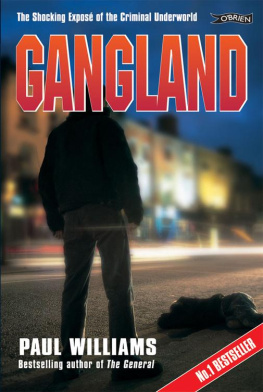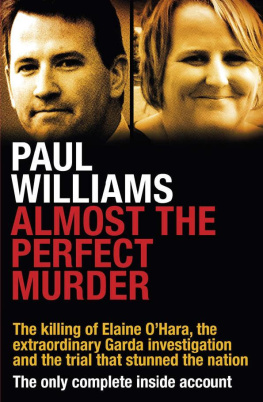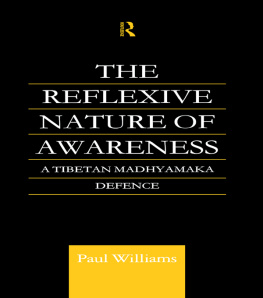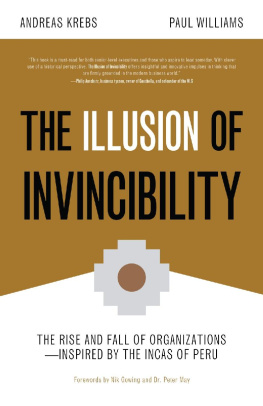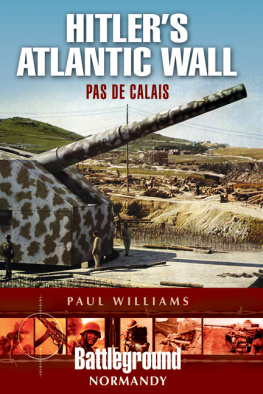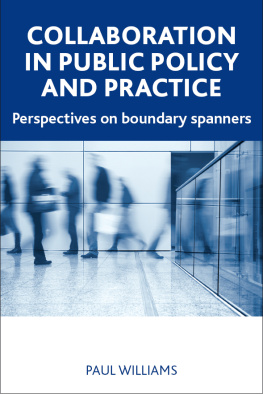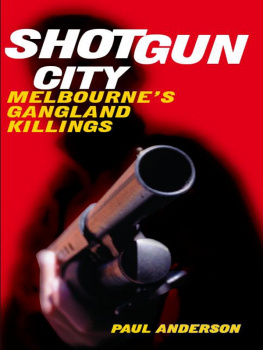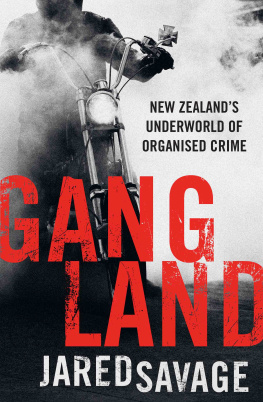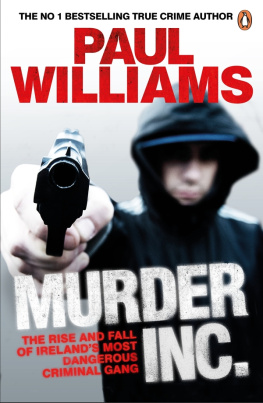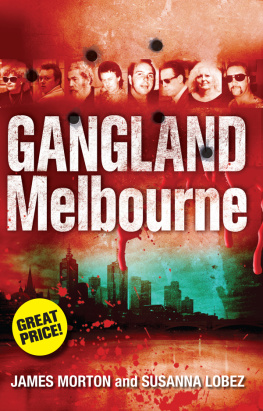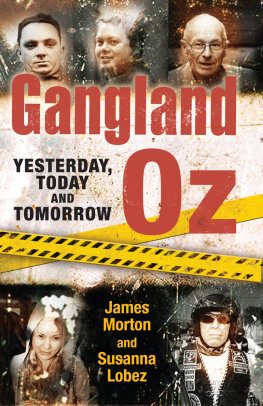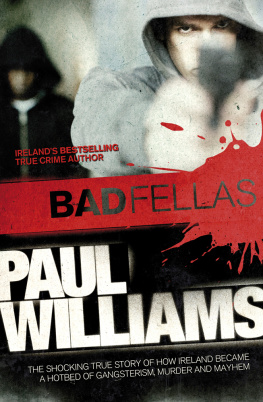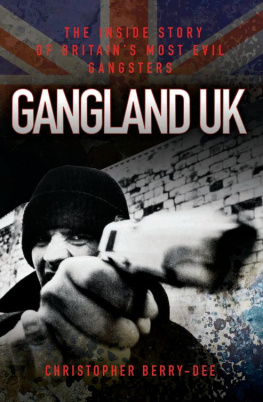Writing about so many underworld figures, some of whose careers span four decades, would have been impossible but for the assistance, patience and good will of a great many people. I want to thank all those involved in the law-and-order business, from both sides of the thin blue line, for their help, advice and information. None of you, for various good reasons, wanted to be identified and I appreciate that. One of these people is an elusive character who can only be referred to here as the fortune teller. He has been a great friend over the past few months.
My gratitude also goes to my equally patient editor and friend, Colm MacGinty, for allowing me the time to complete the book, and North Leitrims finest, Big Mick McNiffe, who has always been there to watch my back. Also my thanks and congratulations to Evening Herald crime man and friend, Stephen Rae. During these long months, we kept each other going with words of encouragement while trying to finish our respective books. Thanks to Irish Independent librarian Lorraine Curran, Sunday World picture editor Gavin McClelland and the staff of the RT library. A special word of thanks to Sarah Hamilton for the amazing amount of work she did in order that I could finish the project on time. Also to legal mastermind Simon McAleese, of Matheson Ormsby Prentice, who, after four years in the Sunday World, probably knows more about villains than most of the criminal Bar put together. Finally, thanks to Michael OBrien and his staff at The OBrien Press. Our relationship could at times be described as stormy, but in the end he was the only publisher in Ireland with the courage to enter uncharted waters and publish The General and now Gangland.
An elusive brutal world called Gangland has existed in Ireland for over a quarter of a century. It is the criminal underworld, a parallel society which thrives on fear, death and dirty money, with its own codes of conduct and behaviour. It is the underbelly of the Celtic Tiger. Here, some of the most successful and respected citizens are killers, robbers, fraudsters, fences, extortionists and drug dealers.
This book pieces together the story of Gangland through the life and crimes of its better-known residents. These are the godfathers and gangs who have influenced the underworld over the past twenty-five years, and whose crimes have both outraged and fascinated. Gangland is the story of the struggle between the forces of law and disorder. Here are the people who have made their mark on underworld history. It is the story of the horrific violence of PJ Judge, the appropriately nicknamed Psycho; the meticulously planned heists associated with Gerry Hutch, The Monk; abhorrent young drug dealers like Thomas Mullen, The Boxer, who brought misery to his own neighbourhood by supplying heroin; the pitiable figure of former armed robber Paddy Shanahan, who was murdered because he wanted to cut his ties with the mob; the colourful and dapper Christy Bronco Dunne, who once headed the countrys most notorious crime gang; and the extraordinary real-life cops and robbers drama of the so-called Athy gang.
The story is also about the appalling experiences of the innocent victims of gangland. The story of a courageous wife and mother called Jennifer Guinness, kidnapped by the Cunningham brothers who wanted to hit the big time no matter what it cost anyone else. The gruesome murder of a small-time crook and Walter Mitty character , William Jock Corbally, who was tortured to death before being dumped in an unmarked grave. And the reign of terror wrought by a ruthless one-man crime wave called Mickey Boyle across Wicklow and Dublin.
Gangland did not exist before the late 1960s. Ireland was a sleepy place in the days before the outbreak of war in Northern Ireland and the mayhem which spread south of the border as a result. The economic boom of the 1960s also played its part in the transformation which was to come. In a few short years, petty crime became much more serious. The burglars and the pickpockets of the 1960s became the armed robbers of the 1970s. And, in turn, a lot of the robbers became the drug barons of the 1980s and 1990s. Drugs, in the words of one criminal interviewed for this book, destroyed the old ethics of so-called Ordinary Decent Criminals. As in every other country in the western world, drugs became a source of vast wealth for organised crime. Ironically, the people who have suffered most from the drug epidemic were the gangsters old neighbours and friends, the downtrodden and forgotten working classes of the sprawling suburbs and inner-cities, where the Celtic Tigers largesse is out of reach.
Drug dealing brought death and devastation to the streets. It also created a new Gangland phenomenon the contract murder. Since criminals moved into the narcotics trade, dozens have been executed in feuds fed by greed, their names added to Ganglands roll of dishonour . In practically every Gangland murder case, the victim was a player in what Martin Cahill liked to refer to as the game that is crime.
During the 1970s and 1980s, the slow and inadequate response of both the Garda and the legislature effectively gave Gangland its independence and the godfathers established its borders. Lack of resources or strategic planning, and a disorganised, plodding criminal justice system helped to facilitate the much more organised crime wave. Gang bosses and their hoods, flush with the millions their rackets had earned, began to think of themselves as untouchable and above the law.
Never was that more brutally illustrated than on 26 June 1996, when a gunman cold-bloodedly shot journalist Veronica Guerin five times, at point-blank range. The outrage was a chilling wake-up call from the gangsters to the establishment. Guerin was shot simply because she had tried to do an interview with the main man. The gang boss who organised the killing was warning the establishment that anyone who crossed him or his cronies was fair game.
But, when he sent his hitman out to work on that sunny summer afternoon, he also made a devastating miscalculation. It led to a counter-offensive against organised crime, which turned the tables in favour of law and order for the first time in over two decades.
As a crime journalist with the Sunday World for over a decade, I have written about all the shady characters in this book and reported on their exploits. Some of them I have known on first-name terms. Others were not as friendly. One even planned my murder, until an unknown assassin indirectly spared me by taking him out of the picture first.
As a study, I have always found crime a fascinating subject. What are the factors which help create a serious criminal and what motivates him to continue committing crime no matter how many times he has been inside? The study of crime gives an insight into a much bigger picture, which a lot of our social leaders through the decades have preferred to ignore. Crime causation tells us as much about the fundamentals of our society and, indeed, ourselves as any other study. It illustrates social dysfunction in other words the failure of our systems of education, welfare, employment and justice. Crime is about the gulf between the haves and the have nots. The vast majority of our criminal population grew up in deprivation, on the wrong side of a social and economic boundary wall. Behind this wall exists a sub-culture where the norms of the middle class mean little. Here it is survival of the fittest, and gangsters tend to be the more nimble ones. Achievement in the underworld is pulling off the big crime and getting one over on the cops. Why have our socially-minded commentators never questioned why so-called Ordinary Decent Criminals are often the heroes of their local communities? In October 1998 the Garda Commissioner, Patrick Byrne, warned that the intervention of the police in social disorder should be a last resort. He argued that social and economic reforms were vital if crime was to be reduced.

